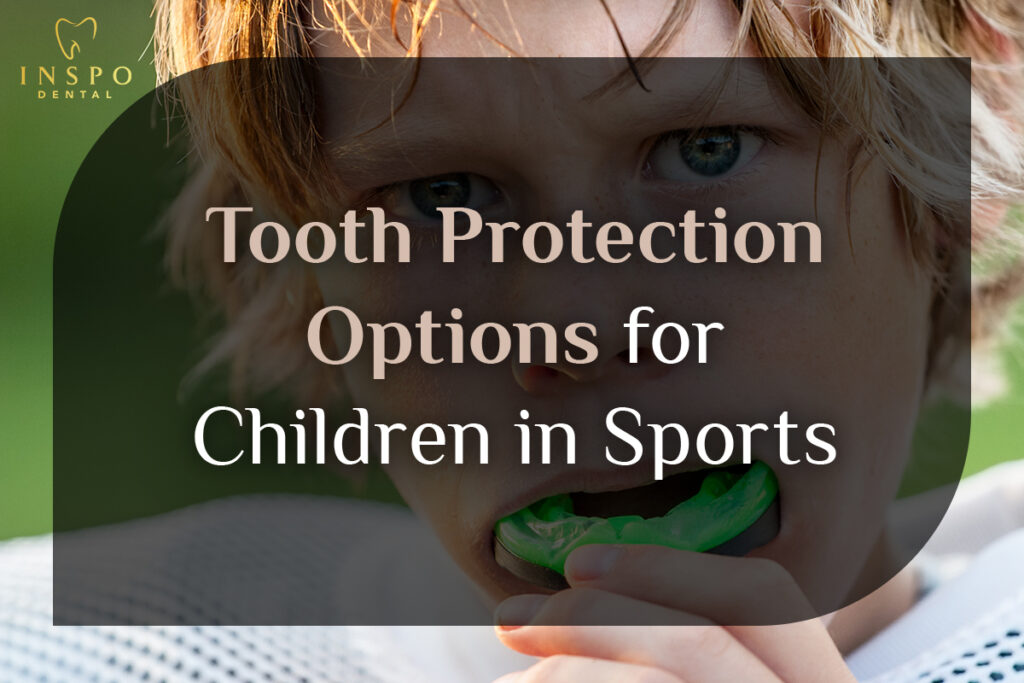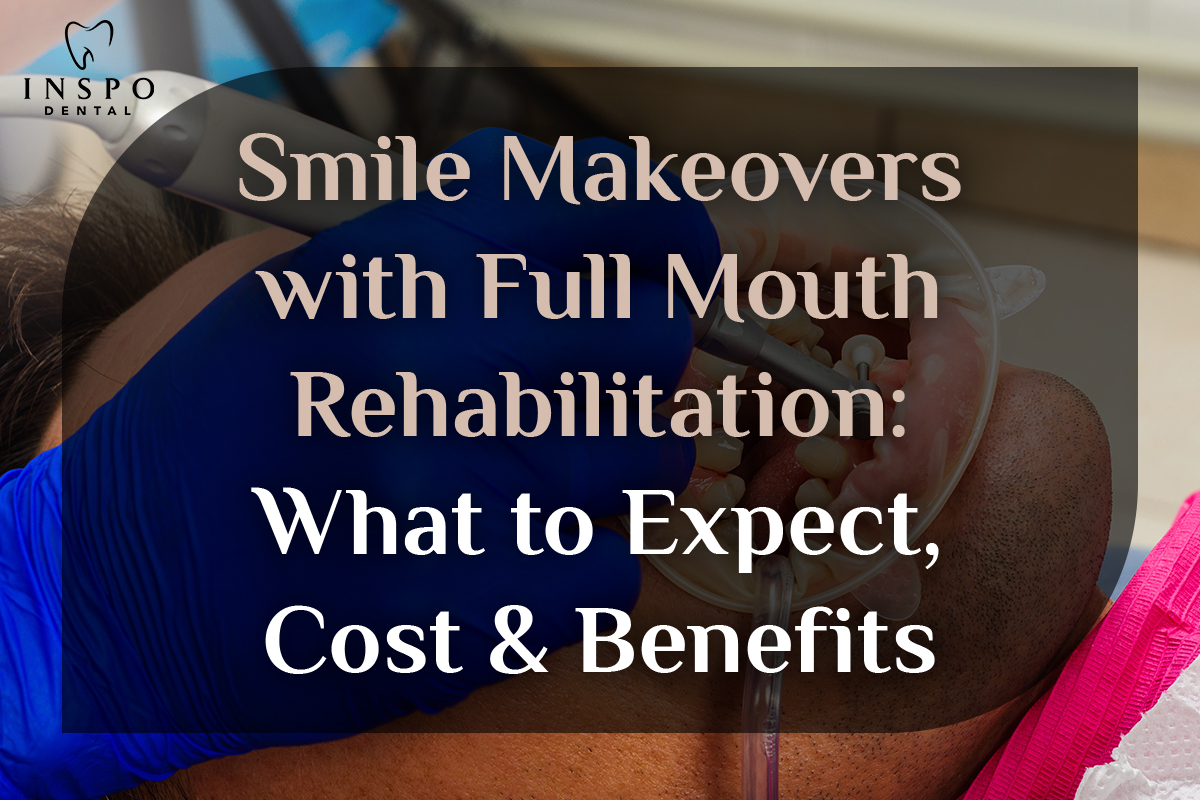When children participate in sports, protecting their teeth is essential to prevent dental injuries, which are common in contact sports and activities with a risk of falls or collisions. Fortunately, several tooth protection options can help safeguard your child’s teeth and reduce the risk of injury. Here’s a breakdown of the most effective tooth protection options for children in sports:
- Mouthguards
Mouthguards are the most widely recommended protective gear for preventing dental injuries during sports. They cushion blows to the face, minimizing the risk of broken teeth, cuts to the gums, and even concussions. There are several types of mouthguards available:
- Stock Mouthguards: These are pre-made and come in standard sizes. While they are the most affordable option, stock mouthguards may not fit well, making it harder for children to talk or breathe comfortably. They provide the least amount of protection due to their poor fit.
- Boil-and-Bite Mouthguards: Made from thermoplastic, these mouthguards are softened in boiling water and then molded to the child’s teeth. Boil-and-bite mouthguards offer a better fit than stock versions and are more comfortable for the child. They are widely available at sports stores and provide a good balance of protection and affordability.
- Custom-Fitted Mouthguards: These are designed by a dentist or orthodontist specifically for your child’s mouth. Custom-fitted mouthguards offer the highest level of comfort, protection, and durability. Though they are more expensive than the other options, they are the best choice for children in high-risk sports such as football, hockey, basketball, or wrestling.
- Face Guards and Helmets
Certain sports, such as football, hockey, and lacrosse, require helmets with face guards to protect not only the teeth but also the entire face and head.
- Football Helmets with Face Guards: These helmets are designed with strong face masks that prevent facial and dental injuries. Combining a helmet with a custom-fitted mouthguard provides maximum protection for children playing high-contact sports.
- Hockey and Lacrosse Helmets: Helmets used in hockey and lacrosse often feature full face cages or visors that shield the mouth and teeth from flying pucks or sticks. Wearing a helmet with a mouthguard provides an additional layer of defense.
- Face Shields for Non-Helmeted Sports: In sports like baseball or softball, where full helmets are not always worn, clear plastic face shields can protect the face and teeth from direct hits.
- Orthodontic Mouthguards
For children who wear braces, a standard mouthguard may not fit properly or could interfere with orthodontic treatment. Special orthodontic mouthguards are designed to fit over braces and provide adequate protection for both the teeth and the braces.
- Boil-and-Bite Orthodontic Mouthguards: These can be molded to fit over the braces and adjusted as the teeth shift during orthodontic treatment.
- Custom-Fitted Orthodontic Mouthguards: Made by an orthodontist or dentist, these offer the best protection and comfort for children with braces. They are designed to accommodate the braces while providing a snug fit.
- Sports Retainers
If your child has recently completed orthodontic treatment and is wearing retainers, it’s important to protect the retainer and teeth during sports. While retainers are not designed for protection, your child should remove them during play to avoid damage. Instead, a custom-fitted mouthguard should be worn to protect the teeth and keep them aligned.
- Dental Sealants
While dental sealants don’t offer physical protection from sports-related injuries, they do play an important role in protecting your child’s teeth during active years. Dental sealants are a thin coating applied to the chewing surfaces of the molars to prevent tooth decay. Children who are active in sports may not always have access to dental hygiene tools on the go, and sealants help protect against cavities when regular brushing isn’t immediately possible.
- Regular Dental Checkups
Regular dental checkups ensure your child’s teeth are healthy and that any protective devices, such as custom-fitted mouthguards or orthodontic mouthguards, are still functioning as intended. Dentists can also identify early signs of tooth wear or damage related to sports activity, offering preventive advice or recommending new protective equipment as your child grows.
- Sports-Specific Recommendations
Depending on the sport your child participates in, specific types of protection may be recommended:
- Basketball and Soccer: Although not all leagues require it, dentists recommend that children wear mouthguards during basketball and soccer due to the high risk of collisions and falls.
- Skateboarding and Biking: Helmets with face guards or shields, combined with mouthguards, are recommended to prevent injuries caused by falls during skateboarding, rollerblading, or biking.
- Martial Arts and Wrestling: In combat sports, wearing custom mouthguards can help prevent broken teeth, jaw injuries, and cuts to the mouth.
- Education on Proper Use
Teaching your child how to properly use and care for their mouthguard is essential. Mouthguards should be cleaned regularly with cool water and stored in a ventilated case. It’s also important to replace mouthguards periodically, especially if they become worn out or damaged.
- Custom-Fit vs. Over-the-Counter Protection
When deciding between over-the-counter (OTC) and custom-fit mouthguards or other protection, it’s essential to weigh the pros and cons of each option based on your child’s specific needs and the sport they’re involved in:
- Custom-Fit Mouthguards:
- Pros:
- Tailored to your child’s unique dental structure, ensuring the best possible fit.
- Provide maximum protection by covering the teeth securely.
- Generally more comfortable to wear for extended periods.
- Less likely to interfere with breathing or speaking, important for children in sports where communication is key (e.g., team sports).
- Cons:
- More expensive than OTC options.
- Requires a visit to the dentist or orthodontist to create the mold.
- Pros:
- Over-the-Counter (OTC) Mouthguards:
- Pros:
- Readily available at sports stores and pharmacies, making them convenient to purchase.
- Less expensive than custom-fit mouthguards.
- Cons:
- Typically less comfortable and secure than custom options.
- May not fit properly, which can reduce the level of protection and cause discomfort during play.
- Children may be less likely to wear them due to fit or comfort issues, especially in high-intensity sports.
- Pros:
- Psychological Comfort and Confidence
- Increased Confidence in Performance: Knowing they are adequately protected can give children more confidence during play. Worrying about potential injuries can distract them from focusing on the game or performing at their best. With proper mouthguards and other protective gear, they can participate more freely and fearlessly.
- Parental Peace of Mind: For parents, providing high-quality protective gear offers peace of mind. You can rest assured that your child is safer when engaging in high-impact activities, reducing the likelihood of injuries that might require emergency dental care or long-term treatment.
- Protecting Against More Than Just Teeth Injuries
Mouthguards, particularly custom-fitted ones, help protect not only the teeth but also the jaw and soft tissues of the mouth. They reduce the risk of injuries such as:
- Jaw Fractures: A direct hit to the jaw can cause fractures. A well-fitted mouthguard helps absorb the impact, reducing the likelihood of a broken jaw.
- Concussions: There is evidence suggesting that mouthguards can help reduce the risk of concussions by absorbing some of the force from impacts to the head or jaw, thus lessening the shock transmitted to the brain.
- Soft Tissue Injuries: Mouthguards provide a barrier between the teeth and soft tissues, reducing the chance of cutting or injuring the lips, cheeks, and gums during contact sports.
- Long-Term Benefits of Tooth Protection
Protecting your child’s teeth during sports doesn’t just help prevent immediate injuries – it also offers long-term benefits:
- Preventing Costly Dental Procedures: Dental injuries can lead to expensive procedures such as root canals, crowns, or implants to repair or replace damaged teeth. Wearing proper protection reduces the likelihood of these injuries, potentially saving thousands of dollars in future dental bills.
- Preserving Oral Health: Trauma to teeth and gums can have long-lasting effects on a child’s oral health, including shifting teeth, difficulty chewing, or alignment issues. Preventing such injuries helps maintain the integrity of your child’s smile into adulthood.
- Consulting with a Dentist or Orthodontist
It’s important to consult your child’s dentist or orthodontist to determine the best protection based on their age, sports activity, and any pre-existing dental conditions, such as braces. The dentist can recommend:
- Specific Mouthguards for the Sport: Dentists may suggest mouthguards tailored to the needs of the particular sport your child participates in. For example, sports with high-impact collisions like football may require more heavy-duty protection than sports like tennis.
- Regular Fit Checks: As children grow, their teeth and jaws change. It’s essential to periodically check the fit of their mouthguard and update it as necessary. Custom mouthguards, in particular, may need to be replaced if they no longer fit properly as your child matures.
- Insurance Coverage for Dental Injuries
Many health insurance plans, especially those with dental coverage, may offer some protection or reimbursements for custom mouthguards or dental injuries sustained during sports. It’s worth checking with your insurance provider to see if coverage includes protective devices or treatments for sports-related dental injuries.
- School and League Requirements: Some school districts, sports leagues, or athletic associations may require children to wear specific protective gear, including mouthguards, for participation in certain sports. Make sure you are aware of these regulations and ensure that your child’s protective gear meets or exceeds these standards.
- Preventing Repeated Trauma
Children who have experienced a previous dental injury are more susceptible to further trauma in the future. If your child has already had a tooth knocked out or chipped during sports, investing in a high-quality custom-fitted mouthguard can prevent further damage to their teeth or the surrounding structures.
- Reinforcing the Importance of Protection
- Encourage Routine Use: It’s essential to make wearing a mouthguard a habit for your child. Even in sports where they might not be required (like soccer or basketball), instilling the routine of using protective gear helps reinforce the importance of safety.
- Positive Reinforcement: Reward your child for consistently using their protective gear. This might involve verbal praise, small rewards, or allowing them to pick out new, exciting designs for their mouthguards or helmets. By encouraging a positive association with protection, they’re more likely to use it without resistance.
- Prevention Beyond the Field
- Off-Field Protection: Besides on-field injuries, children active in sports are also prone to off-field accidents, such as falls during practice or while engaging in recreational play. Ensure that your child knows the importance of wearing their mouthguard and helmet even during less formal activities.
- Protection in Other High-Risk Activities: Beyond traditional sports, some children may participate in activities like skateboarding, rollerblading, or BMX biking, where dental injuries are common. Encourage your child to use their mouthguard and other protective gear in these environments as well.
- Psychological and Social Benefits of Injury Prevention
- Avoiding Emotional Trauma: Dental injuries can have a significant emotional impact on children, leading to fear, embarrassment, or anxiety about their appearance. Preventing injuries through proper protection can spare your child from the psychological distress that may accompany a broken or knocked-out tooth, which could affect their confidence in social situations or sports.
- Boosting Participation Confidence: A child who feels well-protected and confident in their safety is more likely to fully engage in sports activities. Knowing that they have the proper equipment, such as a mouthguard or helmet, can eliminate hesitation and increase their enjoyment of the sport.
- Involving Coaches and Teams in Safety Measures
- Encouraging Team-Wide Protection: Collaborating with coaches and athletic trainers can help promote a culture of safety within the team. Encourage team-wide use of mouthguards and helmets to set an example for all athletes. This can foster an environment where every child understands the importance of protecting their teeth and overall well-being.
- Making Safety a Priority in Team Policies: Some schools and sports organizations already require certain types of protective gear, but if your child’s team does not, consider advocating for policies that prioritize safety, including the use of mouthguards for all participants, not just those in high-impact sports.
- Encouraging Peer Influence and Team Support
- Children Learn from Their Peers: Children are likely to follow the example set by their teammates. If the team leader or key players wear their mouthguards consistently, other children will be encouraged to do the same. Positive peer influence can promote consistent use of protective gear across the whole team.
- Reinforcing Positive Behaviors: Coaches and team leaders can reinforce the importance of safety gear by acknowledging and rewarding players who consistently wear their mouthguards or helmets. Recognition from authority figures on the team helps children internalize the importance of protective gear.
- Balancing Performance and Protection
- Performance vs. Protection Myth: Some children (and even parents) believe that wearing mouthguards or other protective gear might negatively impact their performance by making it harder to breathe, talk, or focus. In reality, modern mouthguards, especially custom-fitted ones, are designed to be lightweight and comfortable without interfering with performance.
- Emphasizing Both Comfort and Safety: It’s important to teach children that comfort and safety can go hand in hand. By using a properly fitted mouthguard, children can focus on their performance without worrying about their teeth. Ensure that your child tries on the mouthguard before playing to make adjustments for optimal comfort.
- Innovative Protection Solutions
- Smart Mouthguards: Advances in technology have led to the development of smart mouthguards that include impact sensors, which can monitor the force of hits during contact sports. These devices can track data that helps parents and coaches assess whether a player has sustained a significant impact, potentially reducing the risk of more serious injuries like concussions.
- Customized 3D-Printed Mouthguards: With advancements in 3D printing, custom-fitted mouthguards are becoming more accessible and accurate. This technology allows for precise molding of mouthguards to ensure the best possible fit for each individual child, improving both comfort and protection.
- Parental Involvement and Education
- Educating Parents on the Importance of Protection: It’s vital that parents stay informed about the risks their children face while participating in sports and the importance of proper protective equipment. Dental injuries can happen in almost any sport, and parental involvement is key to ensuring children wear the necessary gear.
- Regular Check-Ins on Protection Use: Periodically check in with your child to ensure they are still wearing and maintaining their mouthguard. As children grow, their needs may change, and a mouthguard that fit well last year might no longer provide adequate protection. Regularly remind your child of the importance of protecting their teeth and overall oral health.
- Maintaining Mouthguards and Protective Gear
- Proper Cleaning and Storage: To ensure the longevity and hygiene of a mouthguard, children should be taught how to properly clean it after each use. Rinsing with cool water and using a mouthguard cleaner or mild soap can prevent bacteria buildup. Storing the mouthguard in a ventilated case will keep it dry and free from dirt or contamination.
- Checking for Wear and Tear: Over time, mouthguards can develop cracks, wear down, or lose their shape. Inspect your child’s mouthguard regularly and replace it if it shows signs of wear or no longer fits correctly. Worn-out mouthguards provide less protection and can even cause discomfort during play.
- Long-Term Health and Safety Implications
- Avoiding Developmental Issues: Protecting your child’s teeth early on, particularly during the years of jaw and tooth development, is crucial for maintaining their long-term oral health. Dental injuries sustained during childhood can have lasting consequences, potentially affecting the alignment of adult teeth, jaw growth, and overall bite structure.
- Preventing Soft Tissue Scarring: Severe dental injuries can lead to cuts or lacerations inside the mouth, which may leave permanent scars on the lips, tongue, or cheeks. A well-fitted mouthguard can protect these soft tissues, reducing the likelihood of needing stitches or medical intervention after an injury.
- Educating Children About Self-Care
- Instilling a Sense of Responsibility: Teaching your child the importance of caring for their protective gear, such as cleaning their mouthguard and storing it properly, helps instill a sense of responsibility. By understanding how to protect themselves and their gear, children are more likely to prioritize their safety in sports.
- Empowering Children to Take Control of Their Safety: Empower your child to take ownership of their well-being by letting them choose their mouthguard design or color, making the experience more personal and enjoyable. This also encourages them to be more proactive about using their protective equipment regularly.
- Expanding Protection Beyond Competitive Sports
- Protection in Casual Play: Even when children are playing non-competitive sports or engaging in recreational activities like skateboarding, biking, or rollerblading, it’s important to encourage the use of protective gear. Casual play can still result in accidents, and encouraging consistent use of mouthguards and helmets builds lifelong safety habits.
- Teaching Safety Off the Field: For children who participate in activities like climbing or trampoline jumping, which may not traditionally require mouth protection, parents should still consider protective gear if there’s a risk of impact or falls. Evaluating the risks of any physical activity can help parents determine when tooth protection is necessary.
- Collaboration with Schools and Sports Programs
- Partnering with School Programs: Schools play a crucial role in enforcing safety measures for children participating in sports. Parents can collaborate with school athletic programs to ensure that tooth protection is a priority. Advocating for mandatory mouthguard use in sports like soccer, basketball, and gymnastics, where facial injuries are common, can further reduce the risk of dental injuries.
- Encouraging Coaches to Emphasize Safety: Coaches are often influential figures in children’s lives. When coaches emphasize the importance of mouthguards and other protective gear, children are more likely to take safety seriously. Parents can work with coaches to make sure that protective gear checks are a part of the pre-game routine and that children are consistently wearing their mouthguards during practices and games.
- School Policies on Sports-Related Dental Protection
- Mandating Mouthguards for All Contact Sports: Some schools already have policies that require mouthguards for contact sports like football and hockey. However, many sports, such as basketball, soccer, and volleyball, don’t have this requirement, despite the risk of dental injuries. Schools can benefit from expanding their policies to include mandatory mouthguards for all high-impact sports.
- Implementing Awareness Campaigns: Schools and athletic programs can launch dental safety awareness campaigns. By educating students and parents about the risks of dental injuries and the importance of protection, schools can create a culture of safety that extends beyond just helmets and pads.
- Reinforcing the Importance of Protection for Teens
- Adolescents Are at Higher Risk: As children become teenagers, their participation in sports may become more competitive and intense. With harder hits and more frequent collisions, the risk of serious dental injuries increases. Teenagers are particularly prone to dental trauma because their permanent teeth are fully developed but still vulnerable to damage.
- Maintaining Protection During Orthodontic Treatment: For teens who wear braces, playing sports presents an additional challenge. Orthodontic mouthguards are crucial in protecting not just their teeth but the braces themselves. These specialized mouthguards are designed to fit over braces, reducing the risk of lacerations and helping avoid expensive repairs to orthodontic appliances.
- Dealing with Emergencies and Dental Injuries
- Preparedness for Dental Injuries: In case a dental injury occurs during sports, it’s important for both parents and coaches to know how to respond. Here are some emergency steps:
- If a Tooth is Knocked Out: Keep the tooth moist at all times. If possible, try to place the tooth back in the socket without touching the root. If this isn’t possible, keep the tooth in a container of milk or a tooth preservation solution, and see a dentist immediately.
- If a Tooth is Cracked or Chipped: Rinse the mouth with warm water to clean the area. Apply a cold compress to the face to reduce swelling, and seek dental care as soon as possible.
- Handling Soft Tissue Injuries: If your child experiences cuts or lacerations to their gums or lips, applying pressure with a clean cloth can help stop the bleeding. A visit to the dentist or a healthcare provider is necessary if the injury is severe.
- Long-Term Effects of Untreated Sports Injuries
- Impact on Oral Development: If a dental injury sustained during sports is not treated immediately, it could lead to more significant oral health issues in the future. Teeth that are knocked out or damaged can shift over time, affecting bite alignment and potentially requiring orthodontic treatment later in life.
- Aesthetic and Functional Concerns: Dental trauma can have lasting impacts on both the appearance and functionality of a child’s teeth. Broken or missing teeth can affect self-esteem, speech, and eating habits, which is why timely intervention and protection are crucial in avoiding these long-term consequences.
- Parental Influence on Dental Protection Habits
- Leading by Example: Children are more likely to adopt safety habits when they see their parents modeling the same behavior. If parents engage in activities like biking, skating, or other sports, wearing their own protective gear sets a positive example for children. By normalizing safety habits, parents can help instill the importance of protection in their child’s daily routines.
- Consistent Reminders and Reinforcement: Just like with other protective measures, such as wearing seat belts or helmets, consistent reminders about using mouthguards and other sports-related protective gear can help build long-term habits. Establishing a routine where safety gear is part of the “getting ready” process for any sport helps children see it as a non-negotiable aspect of their playtime.
- Sports Camps and Protection Awareness
- Integrating Safety in Summer and Off-Season Camps: Many children participate in sports camps during the summer or off-season. These are prime opportunities for reinforcing the importance of mouthguard use, especially since camps may involve intensive training and higher injury risks due to overuse or exhaustion.
- Providing Education to Camp Counselors: Sports camp counselors and trainers should be educated on the importance of enforcing tooth protection during activities. By establishing clear rules about wearing mouthguards during camp sessions, counselors can help prevent injuries and raise awareness of dental safety among campers.
- Custom Mouthguard Programs for Schools and Teams
- Offering Custom Mouthguards for Teams: Schools and sports leagues can collaborate with local dentists to provide custom-fitted mouthguards for all athletes. These programs could be offered at a discounted rate or through sponsorships to ensure that all children have access to high-quality protection. This is particularly beneficial for teams in high-impact sports where the risk of dental injuries is significant.
- Team Branding and Customization: Many mouthguard manufacturers offer customization options that allow teams to design mouthguards with team colors or logos. This not only makes wearing the mouthguard more appealing for children but also encourages a sense of team unity and pride in safety.
- Financial Considerations and Insurance Coverage
- Weighing the Cost of Protection vs. Treatment: While custom-fitted mouthguards may seem expensive, they are far more affordable than the cost of treating a serious dental injury, which could involve emergency dental care, orthodontic treatment, or long-term dental restoration like implants or crowns. Investing in proper protection can save significant money in the long run.
- Insurance for Sports-Related Dental Injuries: Some dental insurance plans may cover the cost of custom mouthguards, especially for children involved in high-risk sports. Parents should check with their insurance providers to see if these costs are covered or if there are any discounts available through partnerships with local dental clinics.
- Adjusting Protection as Children Grow
- Periodic Mouthguard Adjustments: Children’s teeth and jaws grow, which means that mouthguards need to be updated regularly to ensure a proper fit. Parents should schedule dental visits to check whether the mouthguard still fits properly or if a new one is needed. An ill-fitting mouthguard can cause discomfort and won’t provide adequate protection.
- Growth and Development Considerations: For children who have lost baby teeth or are in the process of getting their permanent teeth, custom mouthguards can be designed to accommodate the changes in tooth structure. It’s important that the mouthguard is fitted specifically to their stage of development to prevent irritation or injury.
A Commitment to Long-Term Dental Health and Safety
The protection of children’s teeth during sports is a responsibility shared by parents, coaches, schools, and the children themselves. By using a combination of custom-fitted mouthguards, helmets, face shields, and proper education, parents can ensure that their children enjoy sports safely while minimizing the risk of serious dental injuries. Involving coaches, sports leagues, and even insurance providers in the conversation around tooth protection helps create a comprehensive approach to safety, setting children up for long-term oral health. Ultimately, developing good habits early on and prioritizing tooth protection as part of the overall sports safety routine will not only protect your child’s teeth but also build their confidence and enjoyment of sports. The long-term benefits of preserving a healthy smile far outweigh the short-term costs, making dental protection a critical investment in your child’s well-being.






